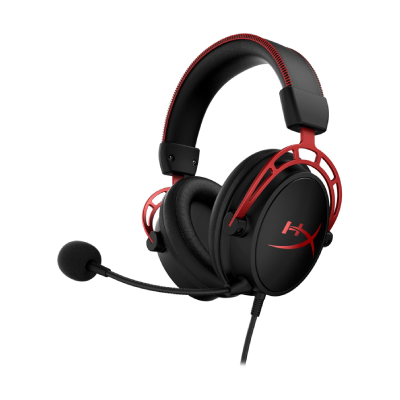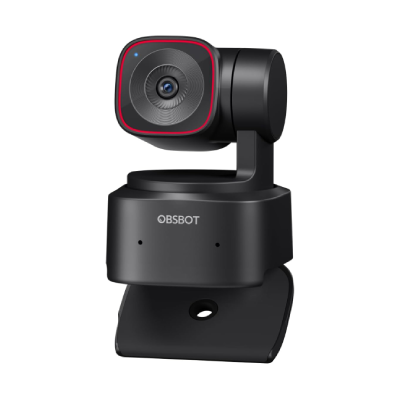What is a Twitch Affiliate?
A Twitch affiliate is a streamer who has achieved several requirements (mentioned below) and has been invited and accepted into an affiliate program where they can monetize their stream and start making money.
As a Twitch affiliate, you gain access to various powerful tools that can help you grow your followers, engage more with your community, and increase your earnings. These include transcoding options, subscriber-only VODS, Streams and Archives, customizable channel point redemptions, and instant custom emote uploads. The complete list of tools is as follows:
Monetization Tools:
- Cheering with Bits
- Subscriptions
- Ad Revenue
- Hype Chat
Video Tools:
- Transcoding options as available
- Subscriber Streams
- Subscriber-Only VODs and archives
- Increased VOD storage from 7 days to 14 days
Community Tools:
- Eligible to create stories on Twitch.
- Customizable Channel Points
- Polls
- Access to Instant Emote Uploads
Requirements for Becoming a Twitch Affiliate
The requirements for becoming a Twitch Affiliate may look a little daunting initially, especially if you’re new to content creation and a little nervous. The hardest thing you will do is click that go-live button for the first time, but I promise, it will be worth it!
The requirements are as follows:
- Reach 50 Followers
- Stream for 8 Hours Total
- Stream on 7 Different Days
- Reach an Average of 3 Viewers

Now, you may think, “Stream for 8 hours? Stream on seven different days? That sounds real easy!” While you are correct, those goals are easy to achieve, the other two are a little more complicated because they require two things:
There are many streamers out there who start off streaming their favorite AAA title game, and while, yes, that is a great way to start, playing a game you love and are probably good at, being a AAA title game, there will be A LOT of other people to compete with. They will mostly already have an audience there, so it would be much harder for you to gain traction from a saturated category.

My advice for this is to play a less saturated game in the Twitch Directory that you will enjoy or look at your analytics overview to see what category Twitch suggests for you. Thus, you will increase your odds of discoverability and bring in new viewers.

This then ties in with how you are as an entertainer. I say this because if you’re just starting, you will be on 0 viewers unless you get some friends or family in to help support you and chat with you. Streaming to 0 viewers is much more challenging than streaming to 10, 50, or even 100+ viewers because if you have nobody to talk to or vibe with as you’re streaming, it makes your job as an entertainer much more difficult.
Tips for Growth and Meeting the Requirements
I touched on growth at the end of the last section. Following that, there are many other ways to promote yourself online and offline to help you meet the requirements of becoming an affiliate.
To help you stay focused and take clear steps toward growth, try setting SMART goals. Take a look at our SMART Goal Planner, made to help you.
On Twitch itself, if you network with other creators by playing with them, streaming simultaneously, or raiding them, you will become more known in their communities. People will naturally come to you as they already have something in common with you and will likely enjoy your content, even more so if you get shoutouts from that creator. This does not mean only playing with creators just to promote yourself. That’s a big nono, and while it could boost you, it will be temporary as people will soon realize that you’re only doing it for that reason and soon unfollow/ignore you. Form friendships and bonds with like-minded people on the platform, and it will come naturally.
However, you will gain most of your growth and follow off-stream. How? You may ask. Simple. Create more content, but use your streams for that content. Don’t put all your eggs in one basket, meaning don’t just use Twitch and expect to be the next big streamer, because that will most likely not happen. You need to use all forms of social media where you can promote yourself across many different platforms in different ways. It will require work, but if you put a little time and effort into making this a solid foundation and stick at it, you will succeed where many fail.
For example, you can stream for 2 hours three days a week. After your stream, you can go back and watch it for any cool/funny moments, clip them, and download them. Also, any longer form parts of your stream, like if you had a great game in Valorant where you played like a pro, highlight that on your Twitch editor and download the highlight. Next, you can use free editing software like DaVinci Resolve, CapCut, or something similar if you don’t already have editing software to improve your clips and add graphics, subtitles, funny sounds, etc. Once you’ve edited your clips, you can upload them to TikTok, Instagram/Facebook reels, YouTube Shorts, and then any long-form content to YouTube.

If you have multiple clips and long-form content, you can schedule it to come out over a few days, so you will always have fresh content on each of the four platforms daily! Also, to help gain more people for your live stream on Twitch, you can always put your Twitch name in the video so people know where to go. On days that you stream, I find it best practice to post on your socials with one of your clips 30-60 minutes before going live, so when your videos go into the algorithms, people can check to see if you’re live, and you will be. You can also post on your X (Twitter), TikTok Story, or Instagram Story when you go live, so anyone who sees it knows you’re live. Don’t use your X (Twitter) account just to promote yourself. Interact with communities and creators you're interested in, so it’s not seen as a link spamming account.
On the topic of self-promotion, Discord is another fantastic place for this, too. If you join the server of the game(s) you play and other content creators that you watch, most of the time, they have their self-promo area where you can post, but not spam, your live stream link for when you go live. Again, don’t make the mistake of being there to spam your link. Make sure to engage with people in the community; otherwise, you will be ignored and seen as just looking for self-promo everywhere.
How to Apply to be an Affiliate
Let's say you have met all the requirements listed above and received an email or dashboard invitation. First, congratulations! Second, you may be thinking, but what now?
To speed up your application, you can prepare the following information ahead of time: legal name, address, SSN (social security number) or TIN (tax identification number) (if applicable), desired payout method, and other personal information.
To begin onboarding, go to your Twitch Creator Dashboard, click Settings, then Affiliate, and finally Affiliate Onboarding.

Next, you need to follow the on-screen instructions and fill in all the information it asks for to the best of your ability, such as your contact information, permanent address, etc.
Note that Twitch is a subsidiary of Amazon, so they use some Amazon tools to help affiliates get paid, including the tax information you’ll be providing in this process. If you need help with definitions for any fields, you can check out the Amazon Tax Information Interview Guide here.
Step 2 is the Monetized Streamer Agreement. If you are under 18, this section will ask your parent or legal guardian to agree to the Twitch Agreement. Your parent or guardian must type their full legal name, check the box, and click Agree to continue.
Step 3 is the Tax Interview stage, where you must complete two tax interviews for royalty and service tax. But don’t fret; it’s not as scary as it sounds. The two forms are very similar, so it would be best to copy and paste a notepad with the information at hand into the correct boxes. As Twitch is based in the U.S., international streamers may need to complete an additional tax form to meet any regional regulations.
You’re almost there! According to Twitch documentation, these forms take three days to validate and, in rare cases, a little longer. If they take more than 2-3 days to complete, however, they advise waiting up to 2-3 weeks to process.
Step 4 is the easy part, the Payout Method. This is the part of the onboarding process where you’ll get most excited and want to ensure your details are extra correct. Twitch uses a third-party payment processor for their payouts. The processor (not Twitch) will charge a fee each time you are paid and a fee for any rejected payouts resulting from incorrect information submitted. There are five options: direct deposit/ACH, check, wire transfer, and PayPal. You can also choose to hold the payouts.
The payout processor requires a minimum balance to pay out any funds. The minimum payout in most methods is $50, and $100 for wire transfer. If you choose to hold all your payments until you’re ready to withdraw them, it can consolidate the transaction fees, or you will be paid automatically with the method you have selected previously.
That’s it! You are now a Twitch affiliate. Congratulations, and happy streaming.



